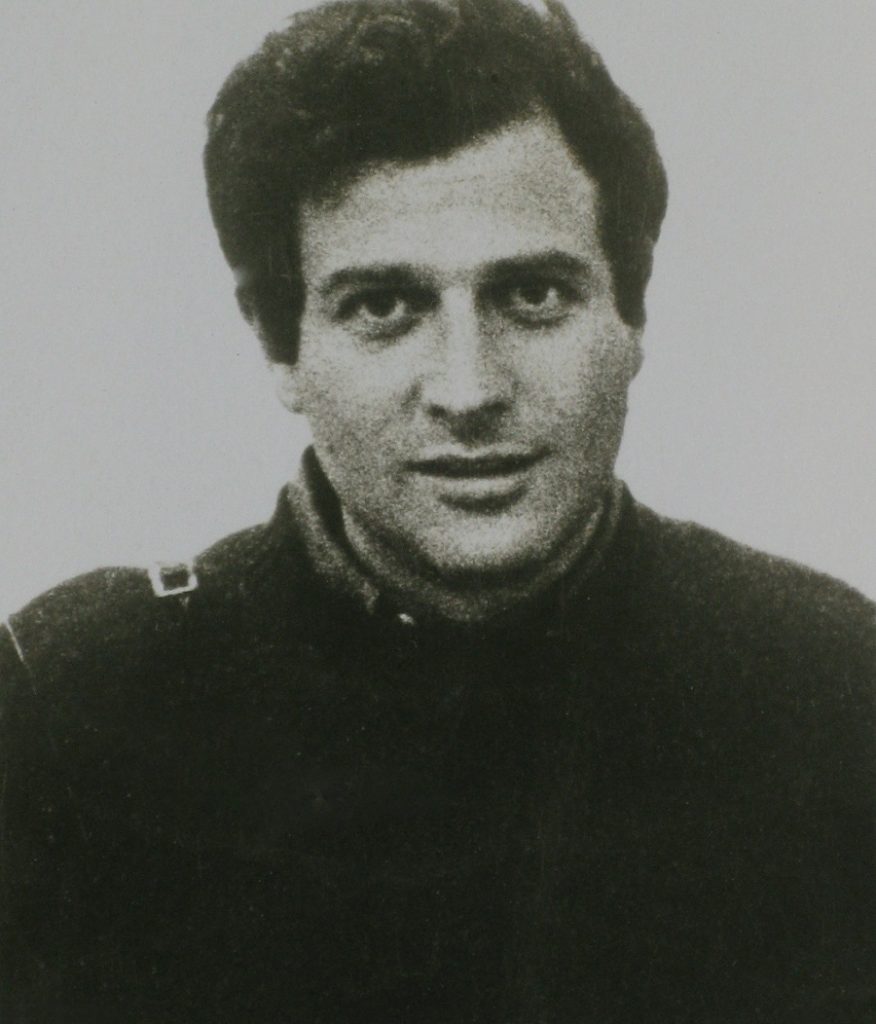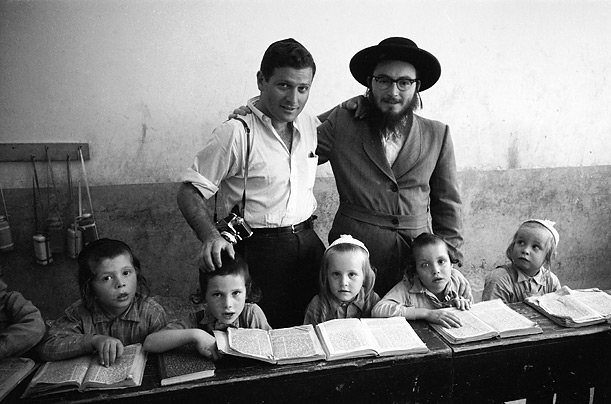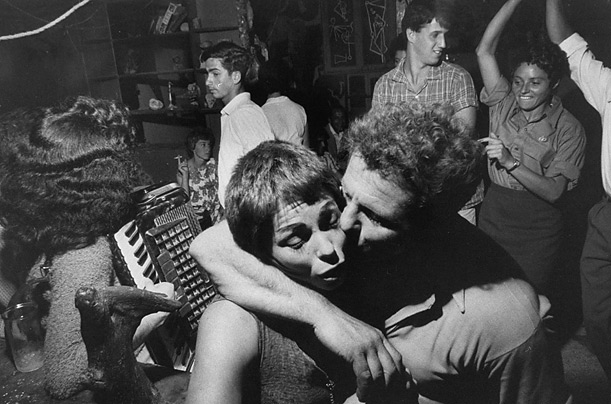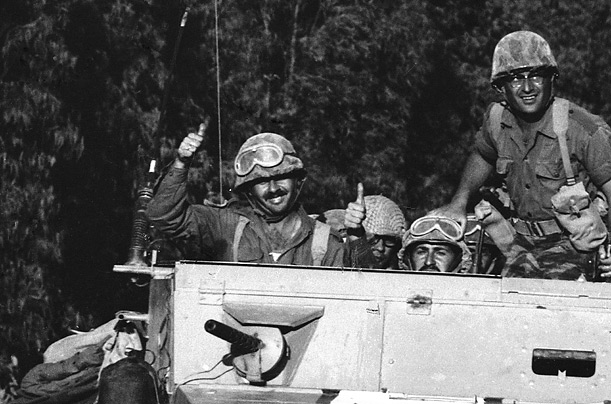In 1967, the award-winning photographer, Paul Schutzer, posthumously received the Citation for Excellence: Robert Capa Gold Medal, awarded by the Overseas Press Club of America. Schutzer won quite a few prizes and citations during his short career. He received the aforementioned citation for his photo coverage of the Six Day War for LIFE magazine, which turned out to be his last assignment. The Jewish-American photographer was killed on June 5, 1967, the first day of the Six Day War, on the outskirts of the Gaza Strip. He died in his prime, at the young age of 36, when he was at the height of his professional success. He left behind a wife, two children, siblings and parents.
In his death, Paul Schutzer joined others from the press who lost their lives while covering the Six Day War, as well as a long line of reporters and photographers who were killed in action throughout the 20th century. Among them, the most famous was, of course, the person after whom the Gold Medal award was named – the Jewish-Hungarian photographer, Robert Capa, who was killed in 1954 during the First Indo-Chinese War.

Robert Capa once said that “if your pictures aren’t good enough, you aren’t close enough.” Schutzer and all the other photographers who risked their lives to take the ultimate photograph adhered to that principle. And Schutzer risked his life more than once. Even when his editors at LIFE magazine were against him going to Israel during the pre-war ‘waiting period,’ he insisted on doing so. Just like he insisted on joining the Freedom Rides of the civil rights activists in Montgomery, Alabama, despite the objection of his superiors. Civil rights were in his blood, as was his love of Israel. He had no problem putting his life in danger if he identified with the cause, and through his photographs he sought to influence public opinion.
Schutzer had an unbreakable bond with his Judaism. He was also an ardent Zionist (according to his wife, if he hadn’t been hired by LIFE, he would have moved to Israel). His Zionist beliefs became even stronger after he went to Auschwitz. He visited Israel numerous times and took many photographs in the country – of people, landscapes, soldiers and buildings. In 1960, the photographed a series devoted to daily life in Israel. He took pictures at Kfar Chabad and on the streets of Tel Aviv. He documented the Lag BaOmer celebrations on Mount Meron and young people dancing in a nightclub in Beer-Sheva. In one of those photographs, a Holocaust survivor lifted her arm to show Schutzer’s camera her prisoner number branded on it. She did so while holding a copy of the daily newspaper Hamodia in her other hand, whose headline announced the capture of Adolf Eichmann.
Schutzer’s love of Israel was a well-known fact, and the eulogy for him published in LIFE made clear reference to that: “One perhaps can console oneself that Paul died where he wanted to die and gave his life for what he felt most. And that is true. But we have lost an exceptional, first-rate man. In Yiddish this type is called a mensch. Paul was a mensch.”

The 1930’s were the heyday of the weekly picture magazines, and LIFE magazine, published by Time-Life Publications, was the most important of them all. In 1936, Henry Luce, Time‘s publisher, bought an old magazine named LIFE and turned it into a weekly that chronicled the news, culture and society in pictures. In 1956, the New York photographer, Paul Schutzer, joined the LIFE team. He was only 26 at the time and was the youngest photographer to receive that professional honor. Although Schutzer was an amateur photographer from the age of 10, he initially considered becoming a lawyer, following in the footsteps of his father. In the end, he studied Art at Cooper Union College and decided to devote his life to photography.
Schutzer was a shining star in the skies of photojournalism. During the 11 years he worked for LIFE – until the day of his death – his photographs appeared in 491 articles. Nothing stressed him out, even if it meant photographing the biggest movie stars, high-ranking politicians or other prominent public figures. Nor did going on assignment to the most dangerous places. He was extraordinarily calm and courageous, and his timing was admirable. He was always ready with his camera in the right place and at the right moment. As for his courage – some said that he “had too much courage” and for that reason died in such tragic circumstances.

The man who documented the Cold War era was friendly with John F. Kennedy and Moshe Dayan, and he traveled from place to place to immortalize the most important events of his day and age. His camera lens caught countless people who made history, in historic moments. He documented the dramatic American presidential elections in 1960, as well as equally dramatic moments in the Afro-American struggle for civil rights. In 1957, he photographed the damage wrought by Hurricane Audrey in Louisiana, and in 1962 the huge earthquake in Iran that killed 12,000 people. He photographed the construction of the Berlin Wall, hunger in India, and protests against U.S. President Richard Nixon. He was arrested in Cuba when he went there to take pictures of Fidel Castro. And he also captured images of the War of Independence in Algeria, in addition, of course, to the photos he took of the Vietnam War. One of his most famous pictures was of a Vietcong soldier who had been captured by U.S. marines. The shocking portrait of the soldier whose eyes and mouth were taped shut appeared on the cover of LIFE in November 1965.
That photograph was an excellent example of how Schutzer evoked emotions using his craft, extracting the human elements out of historic events. And when he took pictures of the Kennedy family, Dwight D. Eisenhower, Richard Nixon or Martin Luther King, his photographs were never stiff or formal, but focused on the human side of his subjects. Besides wars, natural disasters and political events, his photographs also put a spotlight on fashion, culture, society and other topics.

When reflecting on the human qualities of Schutzer’s works, many photographs come to mind: the one of John F. Kennedy and his wife Jackie at the inaugural ball, the one of Marilyn Monroe and Arthur Miller kissing in the car, the one of female supporters of John F. Kennedy during his presidential campaign, who were apparently smitten by the handsome candidate, and the one of a black child sitting in an all-white classroom in the United States, with all the other children gazing at him.
In 1961, Schutzer and his family moved to Paris, where he remained for five years. While living there, he went on assignments across the globe, which included photographing life in Italy and in Eastern Europe. His last assignment was covering the Six Day War. Despite the danger inherent in that assignment, Schutzer insisted on joining the Israeli soldiers on the front and received special approval from Moshe Dayan to do so. While riding in one of the lead half-track personnel carriers under the command of Major Arieh Meir, Schutzer stepped out to take a picture and took a direct hit to the head. Even though Schutzer was well aware that Robert Capa had been killed in the First Indo-Chinese War after getting out of his jeep to take a picture, he still chose to do the same thing. On the other hand, it’s not clear whether Schutzer would have survived had he remained in the vehicle, because it too was hit by an Egyptian shell, caught on fire, and most of the men inside were killed as well. Schutzer’s camera was found next to his body. The last pictures he managed to take were published in Life about two weeks after his death.

In 1969, two years after her husband’s death, Schutzer’s widow, Bernice, and their son, David, came to Israel for the first time. From her perspective, it was a journey to get acquainted with the country that her husband loved so much and died in. During that visit, Bernice planted a tree in the Jewish National Fund forest named after Schutzer at Kibbutz Beeri near the Gaza Strip, not far from the place where he was killed. She was also interviewed by the newspaper, Maariv. The occasion was the opening of a photography exhibition at the Israel Museum in Jerusalem – called The Concerned Photographer – which was dedicated to Schutzer’s memory. In that interview, Bernice said: “Because he was the man I loved – I couldn’t object to him flying to hot spots around the world.”
Their daughter, Dena, characterized her father’s work as follows: “He focused on the people in power and the powerless, the people who were responsible for the events and those who were affected by them.” Just like his daughter said, when Schutzer documented historical events, he pointed his camera also at the simple people who got involved in those events involuntarily, and often paid a heavy price. He, too, paid the heaviest price of all.
